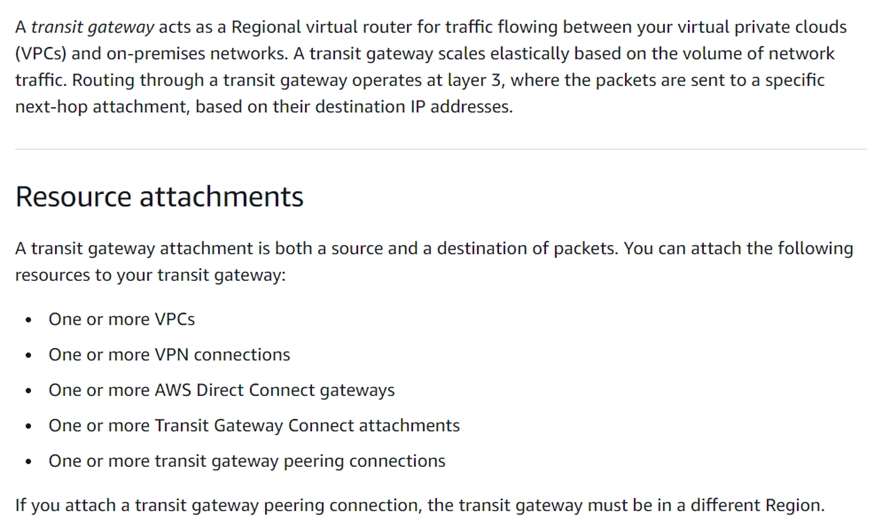A company in the United States (US) has acquired a company in Europe. Both companies use the AWS Cloud. The US company has built a new application with a microservices architecture. The US company is hosting the application across five VPCs in the us-east-2 Region. The application must be able to access resources in one VPC in the eu-west-1 Region. However, the application must not be able to access any other VPCs.
The VPCs in both Regions have no overlapping CIDR ranges. All Accounts are already consolidated in one organization in AWS Organizations.
Which solution will meet these requirements MOST cost-effectively?
A. Create one transit gateway in eu-west-1. Attach the VPCs in us-east-2 and the VPC in eu-west-1 to the transit gateway. Create the necessary route entries in each VPC so that the traffic is routed through the transit gateway.
B. Create one transit gateway in each Region. Attach the involved subnets to the regional transit gateway. Create the necessary route entries in the associated route tables for each subnet so that the traffic is routed through the regional transit gateway. Peer the two transit gateways.
C. Create a full mesh VPC peering connection configuration between all the VPCs. Create the necessary route entries in each VPC so that the traffic is routed through the VPC peering connection.
D. Create one VPC peering connection for each VPC in us-east-2 to the VPC in eu-west-1. Create the necessary route entries in each VPC so that the traffic is routed through the VPC peering connection.
The VPCs in both Regions have no overlapping CIDR ranges. All Accounts are already consolidated in one organization in AWS Organizations.
Which solution will meet these requirements MOST cost-effectively?
A. Create one transit gateway in eu-west-1. Attach the VPCs in us-east-2 and the VPC in eu-west-1 to the transit gateway. Create the necessary route entries in each VPC so that the traffic is routed through the transit gateway.
B. Create one transit gateway in each Region. Attach the involved subnets to the regional transit gateway. Create the necessary route entries in the associated route tables for each subnet so that the traffic is routed through the regional transit gateway. Peer the two transit gateways.
C. Create a full mesh VPC peering connection configuration between all the VPCs. Create the necessary route entries in each VPC so that the traffic is routed through the VPC peering connection.
D. Create one VPC peering connection for each VPC in us-east-2 to the VPC in eu-west-1. Create the necessary route entries in each VPC so that the traffic is routed through the VPC peering connection.
